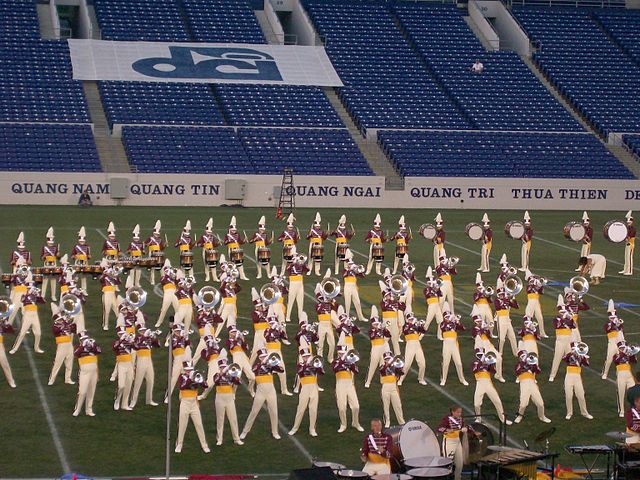Drum and bugle corps (classic)
Classic drum and bugle corps are musical ensembles that descended from military bugle and drum units returning from World War I and succeeding wars. Traditionally, drum and bugle corps served as signaling units as early as before the American Civil War, with these signaling units having descended in some fashion from ancient drum and fife corps. With the advent of the radio, bugle signaling units became obsolete and surplus equipment was sold to veteran organizations. These organizations formed drum and bugle corps of civilians and veterans, and the corps performed in community events and local celebrations. Over time, rivalries between corps emerged and the competitive drum and bugle corps circuit evolved.
The United States Marine Drum and Bugle Corps.
Members of the Regimental Band of The Queen's York Rangers (1st American Regiment) (RCAC) during the 2008 Toronto Santa Claus Parade.
The Philippine Marine Corps Drum and Bugle Team (MDBT)
Drum and bugle corps (modern)
A modern drum and bugle corps is a musical marching unit consisting of brass instruments, percussion instruments, electronic instruments, and color guard. Typically operating as independent non-profit organizations, corps perform in competitions, parades, festivals, and other civic functions. Participants of all ages are represented within the corps activity, but the majority are between the ages of 13 and 22 and are members of corps within Drum Corps International.
The Cadets Drum & Bugle Corps (Erie, PA) perform in Annapolis, MD on June 16, 2007
The lowest-pitched of the horns used in drum corps is the contrabass bugle, or 'contra'. Here, members of a DCA corps from Upstate New York are shown performing in a parade.
The Bluecoats pit used thematic vocal amplification in their 2007 performance, "Criminal."
Rehearsal at Blue Stars Drum and Bugle Corps







